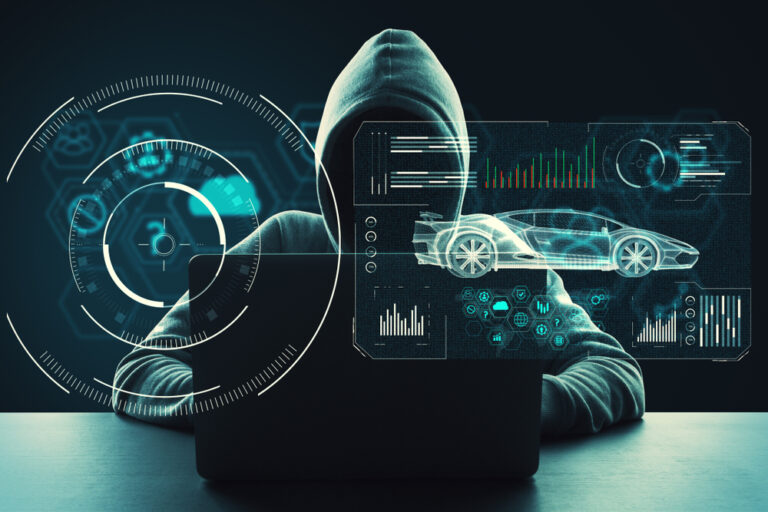- Insight into the evolving cyber threats faced by the automotive industry.
- Best practices for manufacturers to establish robust cybersecurity measures.
- The potential of AI and machine learning in combating cyber risks.
- How the automotive industry can prepare for the future of cybersecurity with autonomous vehicles.
Table of Contents:
- Overview of Cybersecurity in the Automotive Industry
- The Evolution of Automotive Cyber Threats
- Cybersecurity Best Practices for Automotive Companies
- The Role of AI and Machine Learning in Automotive Cybersecurity
- Cybersecurity Regulations and Compliance in the Auto Sector
- Conclusion: Maintaining Vigilance and Adaptability in Auto Cybersecurity
1. Overview of Cybersecurity in the Automotive Industry
The automotive industry is transforming, fueled by technological advancements dramatically increasing vehicle connectivity. Today’s cars are not mere means of transportation but sophisticated mobile devices capable of communication, data processing, and many electronic tasks.
These capabilities, however, bring forth significant cybersecurity concerns. Integrating IT and OT systems in vehicles has opened up new attack vectors for cybercriminals, making it more important than ever to focus on the security of the vehicle’s hardware and software.
The rise of these cyber threats coincides with an increasing reliance on vehicles for personal transport and the collection and transmission of personal data. With each vehicular innovation, the need for robust cybersecurity strategies becomes more critical.
In this highly connected ecosystem, manufacturers must ensure the protection of personal information, the integrity of vehicular operations, and the safety of their customers. One can observe Fortinet’s work with Chinese automotive manufacturers to see how industry leaders are implementing sophisticated strategies to address these complex cybersecurity challenges.
2. The Evolution of Automotive Cyber Threats
Cyber threats within the automotive industry have evolved dramatically over time. In the early days, security concerns centered around physical theft and vandalism. As vehicles became more integrated with technology, the focus of cybercriminals shifted to the exploitation of digital vulnerabilities.
Today, the automotive industry is grappling with many threats, from sophisticated ransomware attacks designed to lock down critical systems to intricate phishing schemes that deceive employees into compromising sensitive information. Notoriously, some groups have even gone so far as to demonstrate the ability to remotely take control of vehicle functions, raising serious safety concerns.
These modern threats reflect the ingenuity and determination of attackers, who continually seek to exploit any weakness for their gain, whether to manipulate data, take control of vehicle systems, or extort money from manufacturers and consumers alike. The current landscape is an arms race; as manufacturers work tirelessly to strengthen their defenses, cybercriminals innovate new attack methodologies.
3. Cybersecurity Best Practices for Automotive Companies
Automobile companies must establish and maintain robust cybersecurity measures given the evolving threat landscape. This involves setting up comprehensive security protocols considering IT and OT components and ensuring a defense-in-depth strategy.
Regular security audits are vital; they allow companies to identify potential vulnerabilities before they can be exploited. Similarly, penetration testing is a proactive tool to simulate cyber-attacks and ensure that defenses are robust and responsive.
But technology alone is not enough. The human element plays a critical role in maintaining cybersecurity, and as such, employee training and security awareness programs are indispensable.
Employees at all levels need to be educated on the importance of cybersecurity, trained to identify potential threats, and empowered to act appropriately when faced with a cyber incident. It’s a holistic approach that weaves cybersecurity into the fabric of the organization’s culture.
4. The Role of AI and Machine Learning in Automotive Cybersecurity
One of the most exciting developments in cybersecurity is the inclusion of AI and machine learning technologies. Both are becoming game-changers in how the automotive industry anticipates, identifies, and responds to cyber threats. By leveraging AI, companies can now implement learning and evolving systems that can detect anomalies and potential threats far more efficiently than traditional methods.
They provide the means for predictive analysis and the capability to recognize patterns that may signal an impending attack.
Moreover, AI enhances incident response measures by facilitating quicker and more accurate decision-making processes. AI serves as a tireless sentinel in many ways, constantly monitoring systems and defending against cyber attacks.
5. Cybersecurity Regulations and Compliance in the Auto Sector
Alongside technological solutions, regulatory compliance presents another significant aspect of automotive cybersecurity. Manufacturers are subject to an intricate mesh of international and local regulations designed to protect consumers and ensure the safety and integrity of vehicular systems.
Regulations such as the General Data Protection Regulation (GDPR) in the European Union have a profound impact, imposing rigorous data protection standards on any organization that handles the personal data of EU citizens, including automotive companies.
Compliance is both a legal requirement and a business imperative. It’s a means through which auto manufacturers can demonstrate a commitment to their customers’ privacy and safety, fostering a climate of trust and loyalty. Regulations also serve as an inducement for continuous improvement in cybersecurity practices.
6. Conclusion: Maintaining Vigilance and Adaptability in Auto Cybersecurity
The automotive industry must remain vigilant and adaptable to fend off the ever-changing array of cyber threats. By embracing continuous education on cybersecurity trends, adhering to stringent regulations, and fostering a corporate culture with security at its core, companies can strive to stay one step ahead of cybercriminals. Embracing innovations such as AI and seeking collaborative partnerships will also be crucial in maintaining a robust defense
. Ultimately, the industry’s commitment to cybersecurity excellence will play a pivotal role in shaping the future of transportation and the protection of consumers in our increasingly connected world.

